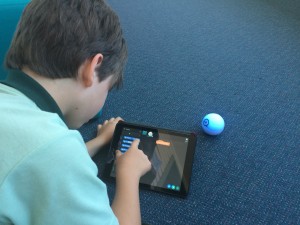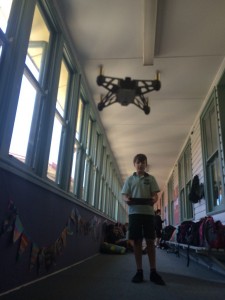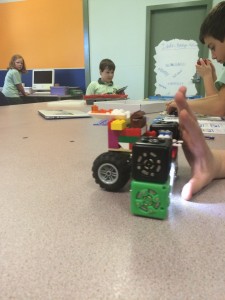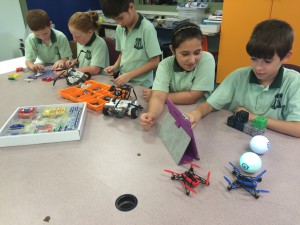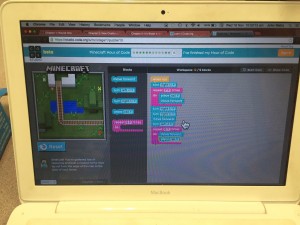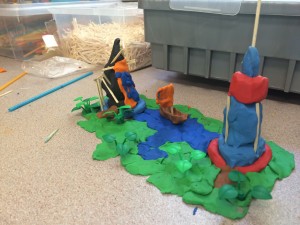This semester we’ve been fitting out an old lab into a K-6 makerspace. For now, we have a dedicated room for children to explore, design, create, make mistakes and reflect, while in effect they learn through play. Kids can make a mess and ideate in a room designed to grow ideas and resilience.
Outcomes wise (and see my previous post for the rational), making meets a range of syllabus outcomes, especially in terms of Working Scientifically through the design process and Working Mathematically aspects of communication, logical thinking and reasoning. Student reflection (English) and a growth mindset that develops resilience are also school priorities.
After consulting with staff, the room has been fitted out with a range of starter equipment including –
Various electronic circuits and kits
Arduino
Lots of LEGO bricks, building pieces and characters
LEGO simple machines sets
KNEX
Boxes of plasticine, paddle pop sticks, match sticks, felt and cardboard
Parrot mini-drones
Sphero robots
LEGO NXT and EV3 robotics
Littlebits electronics
Cubelets robots
Digital microscopes
And before you ask a 3D printer? – No (not yet convinced!)
As K-6 classes identify what suits both students and teachers we will top up kits as needed. Initially we have had great success with Sphero and Parrot mini-drone coding through Tickle app. We don’t want the kids just driving and flying the drones (though it is an introduction) we want students taking on challenge problems using coordinates, angles, distance and time. Logical programming apps such as Tickle enable this to occur.
From the high tech of drones to low tech, students are planning, making, testing and improving their designs. Marble runs with cardboard rolls and paddle pop sticks and simply creating plasticine modelled landscapes and objects are still a favourite.
Interestingly and pleasingly, making and tinkering is already moving into classrooms with children and teachers using both high tech (Littlebits, Sphero etc) and low tech (plasticine, cardboard).
As making becomes embedded in the contemporary teaching and learning cycle I’m sure we will see more making and tinkering in rooms, and it will become a norm rather than the exciting and somewhat ‘new’ type of learning often thrown into the now well out of date 21st Century learning myth.
Always learning.


